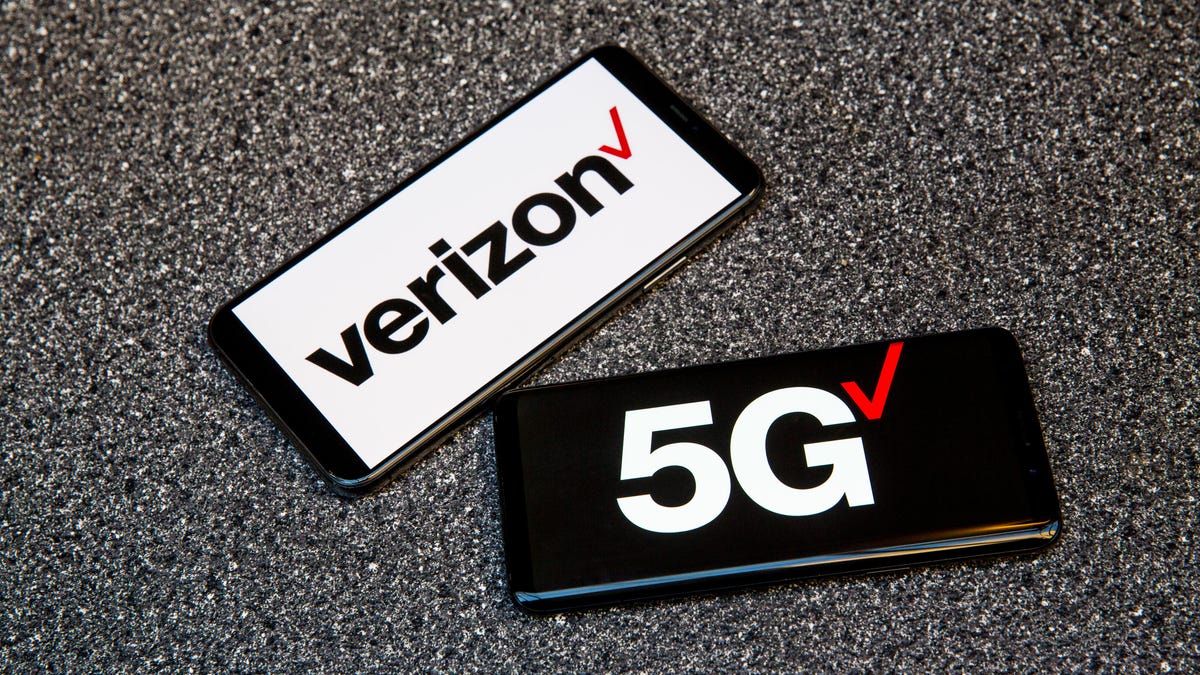Verizon's upgraded 5G will cover 100 million people this month
Despite a two-week delay in the rollout of its so-called C-band radio airwaves for improved 5G service, Verizon is still gearing up for a big push.

Verizon's 5G plans may have hit some turbulence with the Federal Aviation Administration this week, but that hasn't fully stopped the carrier. On Tuesday, the nation's largest wireless provider unveiled its updated 5G plan, including tweaked plans for wireless and home internet users and revealing that it intends to cover 100 million people in more than 1,700 cities with faster connections this month.
Verizon previously planned to cover 100 million people with a set of radio airwaves called C-band by March, putting the carrier ahead of its previously stated goals. Verizon spent over $50 billion to acquire the valuable wireless airwaves last year in the hopes that it would give its 5G network a notable boost in performance.
Many of the countries largest metro areas will be in Verizon's initial C-band rollout including New York City, Los Angeles, Chicago, San Francisco, Boston and Miami.
Although Verizon has had 5G in some form since 2018, its fastest millimeter-wave connections (dubbed Ultra Wideband) have largely been limited to certain blocks in select cities or parts of certain airports, arenas or stadiums. Its more widespread low-band 5G network (what it calls "5G nationwide") often offers similar performance to a 4G LTE connection.
C-band offers a chance to boost both the speed and coverage of 5G for customers who might have been underwhelmed with the service for the last two years. It operates in what is known as midband and is a nice mix of the other two frequencies: significantly faster performance than low-band but with much better coverage than millimeter-wave. Verizon says that when its new C-band network (which will also fall under the Ultra Wideband name) goes live later this month it will be capable of download speeds up to 1 gigabit per second.
Those looking to get the faster connections will still need to have a compatible 5G phone and be on one of the carrier's pricier unlimited plans. This includes the currently available Play More, Do More or Get More options as well as the older Above or Beyond unlimited options.
At launch, compatible devices will include Apple's iPhone 12 and iPhone 13 lines and Samsung's Galaxy S21 line, Z Flip 3 and Z Fold 3 as well as 5G iPads. Verizon has previously said that other devices, like Google's Pixel 5 and Pixel 6, will be getting software updates for C-band 5G but it has yet to provide a timeline for when those might roll out.
If you are on other Verizon plans, such as its Start Unlimited offering, you will not be able to tap into the faster 5G networks even if you have a compatible device.
Updated plans for wireless and home internet users
Verizon's 5G Home modem.
In addition to rolling out the new network, Verizon is also tweaking some of those wireless plans on Jan. 5 though it isn't changing its pricing.
Hotspot data is being bumped up across the board, with Play More and Do More now getting 25GB of high-speed data (up from 15GB) and the Get More plan now including 50GB of high-speed data (up from 30GB).
Play More and Get More plans will now have Apple Arcade or Google Play Pass included (Verizon previously offered either service for one year), while those with the business-focused Do More or Get More will also now get one day of free-roaming per month when traveling internationally in one of more than 185 countries (Verizon normally charges $10 per day).
Get More will also no longer have a data cap for how much high-speed data you can use in a month from your phone, following the likes of top plans such as T-Mobile's Magenta Max and AT&T's Unlimited Elite.
Verizon says that "later this month" it will automatically add the new perks and hotspot increases to existing Do More, Play More and Get More users. If you already are on one of those plans your bill will not change and you won't need to do any manual adjustments to your plan.
Perhaps the most notable plan improvement will be if you also live in an area that has Verizon's 5G Home internet available. When combining 5G Home with one of the three unlimited plans the price for home broadband will drop by 50%.
If you have automatic payments set up the carrier charges $50 for its 5G home broadband product, which includes taxes, fees and equipment charges in the price (it's $60 per month without AutoPay). Combined, you could in theory be getting home internet for $25 per month with no data caps.
Verizon says that "typical" download speeds for the home broadband service are 300 Mbps, with peaks of 1 gigabit per second.
The $50 per-month plan also comes with a two-year price guarantee, a free month of service, Google Nest Mini and Verizon's Stream TV connected box for using apps on your television. A $70 per-month option (with AutoPay), called 5G Home Plus, adds on to those perks to include a three-year price lock, unlimited cloud backup to Verizon Cloud, one-year subscriptions to Disney Plus and AMC Plus and swaps out the Nest Mini for Google's Nest Hub Max.
Verizon offers 5G Home in 65 cities today using its millimeter-wave 5G network. The carrier has said that when C-band goes live it plans to expand the offering to "millions more homes and businesses," but it has not yet detailed when or where exactly that will be.

